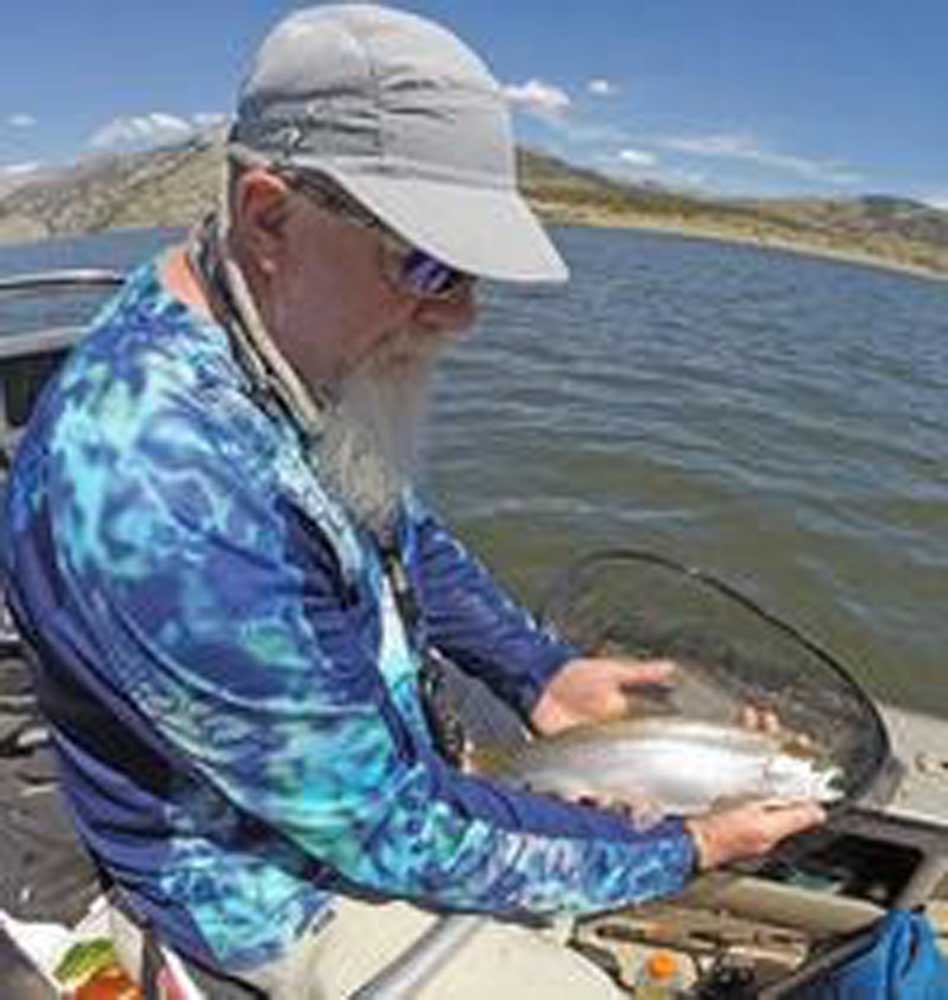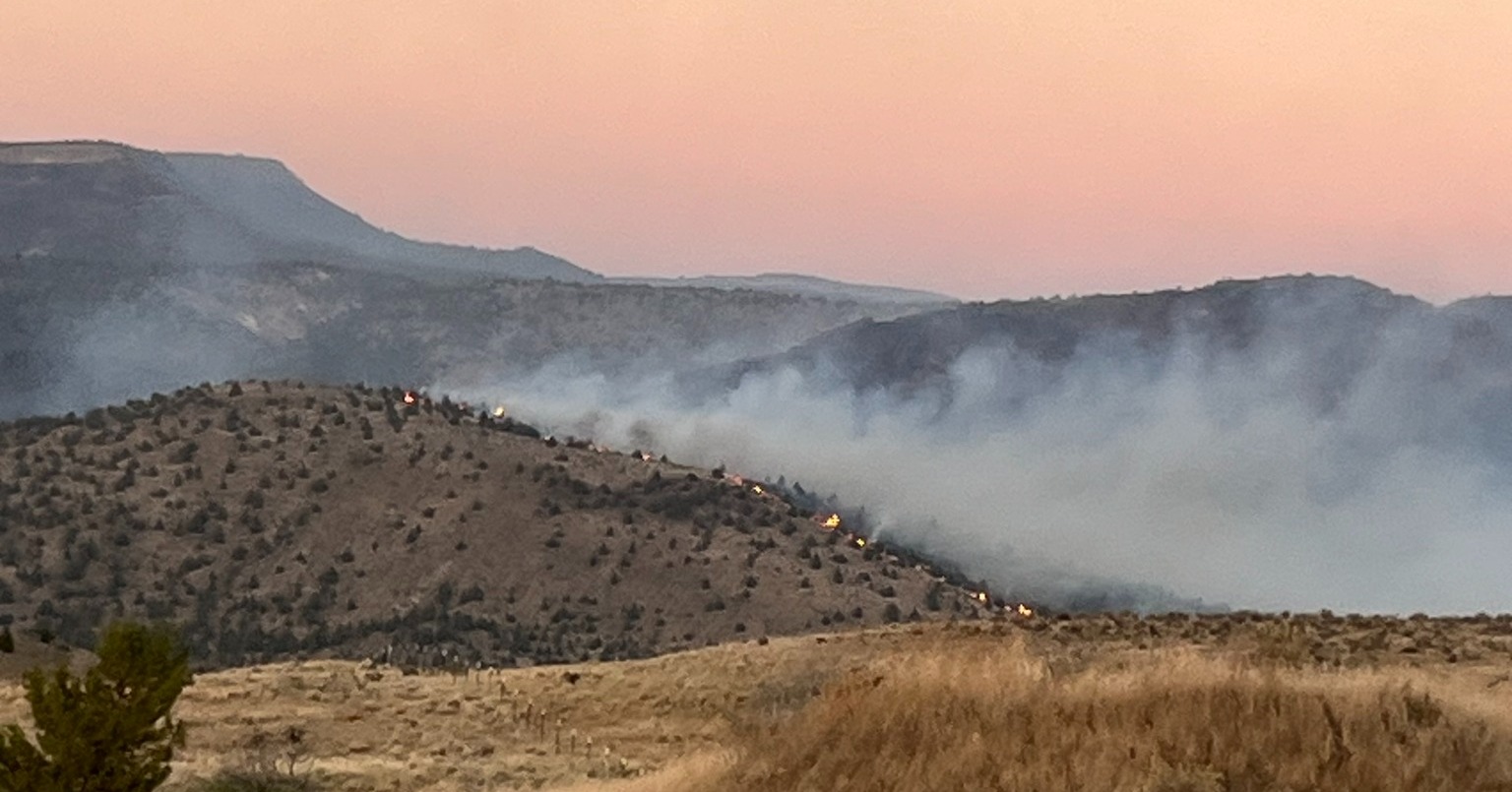Father, son share tips on hometown fisheries
Published 5:52 am Thursday, June 8, 2017

- Kit Johnson displays a Holter Lake rainbow that hadn’t spawned and was bright-silver. (Brett French/Submitted photo)
HOLTER RESERVOIR — With a strong tug, the 1⁄8-ounce lead jig came loose from the pine tree branch it had accidentally landed on and rocketed back at the boat as if it had been shot from a rifle.
Bang! Luckily, it struck the side of the aluminum boat and not one of the anglers.
Trending
“Losing jigs is part of the game,” said Kit Johnson with a chuckle. “If you’re not losing jigs, you’re not fishing right.”
Fish school
Luckily for Kit, he has a never-ending supply of jigs. He and his son, Trevor, are the brains and brawn behind Helena-based Kit’s Tackle, which makes a variety of fishing jigs, flies and rods developed, tested and proven effective on Montana waters. The two also offer their expertise as fishing guides.
Step into the Johnson’s boat, and it’s a nonstop day of education: from prime times on the water to proper tackle, technique and even a bit of history. And it’s hard to beat the beauty of this 30-mile long Missouri River reservoir’s canyon section, known as the Gates of the Mountains.
“Every time I come out here, I think of Lewis and Clark,” Kit said of the intrepid early explorers of the West. “They’re the ones who named it. They got about 400 yards from the mouth of the canyon, and the cliffs looked like they closed off the river.”
Meriwether Lewis said in his journal entry for July 19, 1805, about the canyon that still holds the name he gave it: “every object here wears a dark and gloomy aspect. the tow[er]ing and projecting rocks in many places seem ready to tumble on us.”
Trending
Trying times
There’s nothing gloomy or dark about fishing with the Johnsons, though, even when the reservoir’s trout are slow to bite.
“We’ll catch something,” Kit promised. “We always do.”
Last week wasn’t the best time to be fishing. The water’s rainbow trout and yellow perch were just finishing spawning, while the walleye were in the middle of the spring spawn. That meant fewer fish willing to bite, but enough to not get skunked.
“The walleye spawn at 44 to 48 degrees,” Kit explained, with the spawn fluctuating over a span of about three to four weeks as the water temperature rises and falls.
Once the water consistently warms to more than 50 degrees, and after the fish have had about two to three weeks to rest after spawning, the bite typically gets better.
“We love from about Mother’s Day to mid-June,” Kit said, when the fish are actively feeding to put weight back on after the spawn.
Multiple species
Holter is home to a variety of fish, including reel-screamingly strong rainbows and a few monster brown trout, perch, walleye and the occasional burbot. A day fishing with the Johnsons can provide a smorgasbord of options, including: pounding the shoreline from the boat with jigs using lightweight spinning rods; casting wet flies with a strike indicator while drifting with the wind on shallow flats; and soaking worms above a lead weight to catch fat perch for a tasty supper.
Kit said it wasn’t until the mid-1950s that Montana Fish, Wildlife and Parks planted walleye in the reservoir, the last in a chain of three reservoirs that begins with Canyon Ferry, then Hauser and finally Holter — all between Townsend and Great Falls in west-central Montana. Once word got out that there were some big walleye in Holter, anglers began keying on the fish. For fishermen used to targeting trout, it took a while to figure out the proper presentation.
“Walleye require a much slower jig presentation,” Kit said, something the Johnson’s have perfected.
Instead of trolling, they position their boat about 60 to 70 feet out and perpendicular to the shoreline.
“Ninety percent of catching fish is boat control,” Kit said.
From the boat, they cast into the shallows, let the jig sink to the bottom and with a swift jerk, pop the jig before letting it sink again. Once the line goes slack, they jerk their rod tip again, repeating the process within the first 15 to 20 feet of water.
Going light
To get the right action on their spinning rods, the Johnsons spool their reels with 4- to 6-pound monofilament line.
“We love mono because there is so much stretch in it,” Trevor said. “That stretch lets you land fish that are lightly hooked.”
There’s also a downside to the mono, as evidenced by the hurtling jig head pulled free from an obstruction.
Kit said he once got hit so hard in the leg by a flying jig that it almost put him to his knees. It’s one of the reasons they always wear sunglasses. The other reason is to protect them from wind-blown or errant fly casters.
“The saying in this boat is that piercings are free but indiscriminate,” Kit joked.








